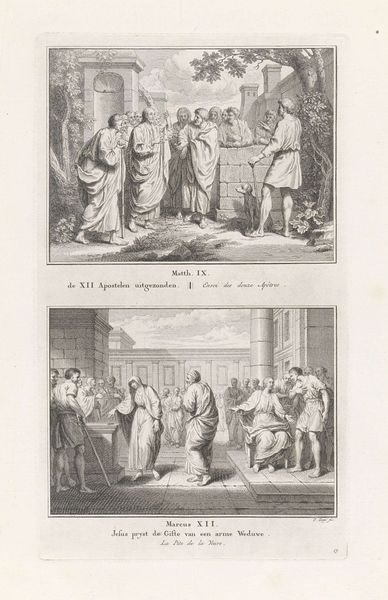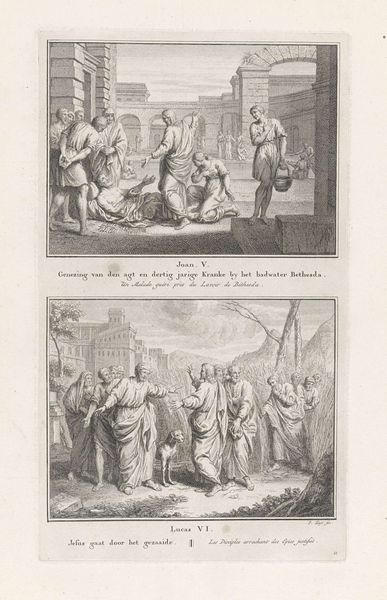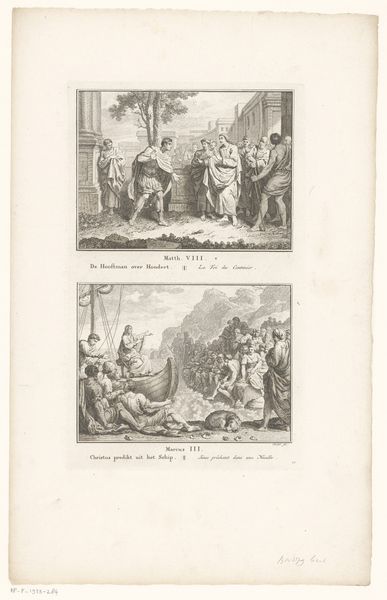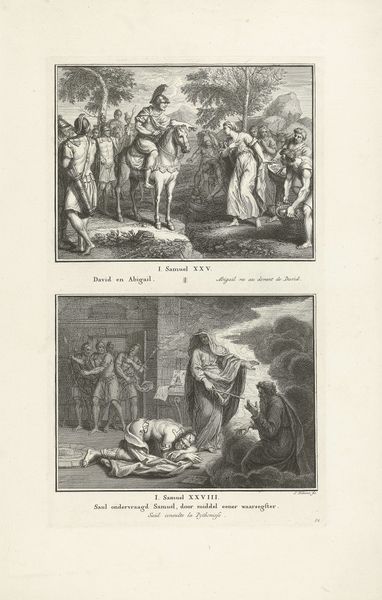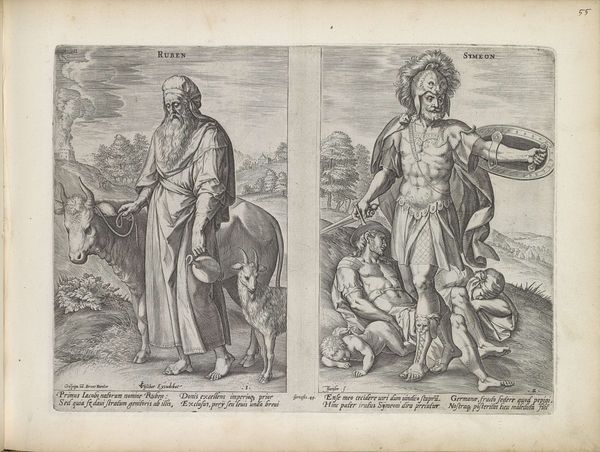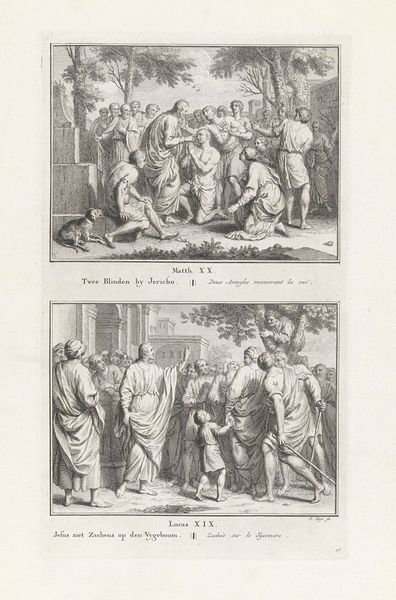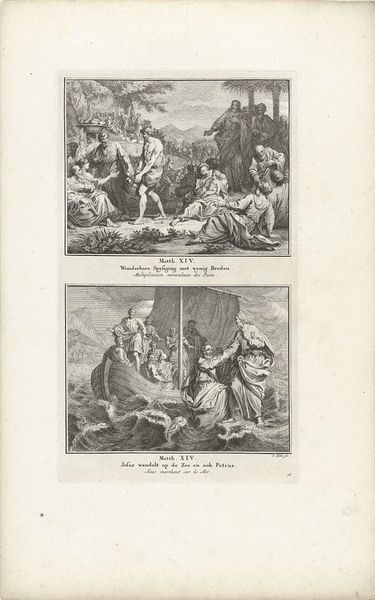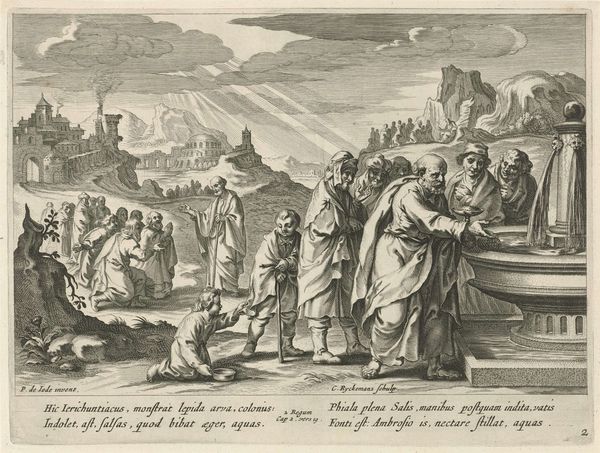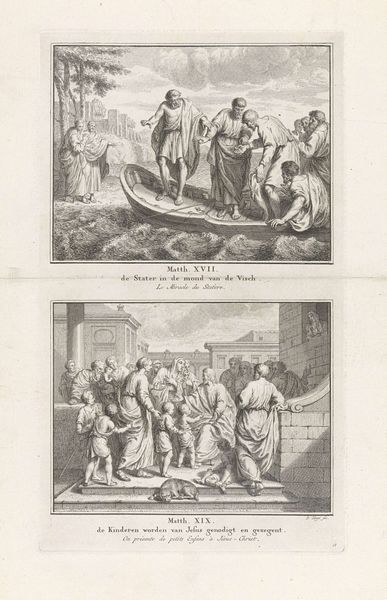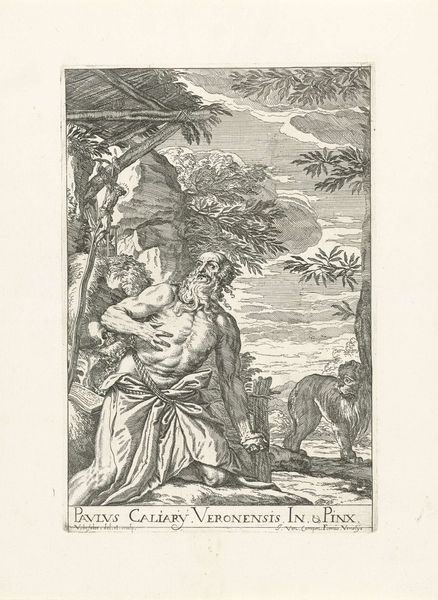
Chinese oplichters die wind verkopen / Chinese oplichters en bedelaars 1726
print, engraving
baroque
figuration
genre-painting
engraving
Dimensions height 333 mm, width 221 mm
Editor: This is "Chinese oplichters die wind verkopen / Chinese oplichters en bedelaars," which translates to "Chinese scammers selling wind / Chinese scammers and beggars", a 1726 engraving by Bernard Picart, currently residing at the Rijksmuseum. It has a distinctly satirical flavour, doesn't it? What structural elements jump out at you? Curator: Structurally, the bipartite composition is immediately apparent, dividing the print into two distinct yet thematically related registers. Consider how the linear precision of the engraving technique allows for meticulous detail. The textures of the fabrics, the landscapes—each contributes to the overall visual density. Editor: I see what you mean about the density. So, focusing on purely visual and structural terms, how do you read the connection between those upper and lower registers in this piece? Curator: I invite you to examine how Picart's use of line directs the eye, creating pathways that connect the figures and their actions. Symmetrical pairings create compositional balances that draw our gaze to central characters in each. Notice the placement of the text in relation to the imagery; consider how the letterforms themselves contribute to the visual rhetoric. Editor: So it's not about subject matter at all? Just the formal qualities, the composition and the way lines create balance? Curator: It's fundamentally about *how* the artist communicates meaning through visual forms. I suggest considering semiotics: how might certain repeated elements, like headwear or the gaze of the subjects, function as signifiers? It may also be worth thinking about how the medium – printmaking – influences the form. Editor: I never thought about the letterforms in the captions contributing to the image. Now I'm seeing it with fresh eyes. Thanks for expanding my viewpoint! Curator: A pleasure. Now, consider the balance, not just within the work but also in your interpretation of it.
Comments
No comments
Be the first to comment and join the conversation on the ultimate creative platform.

